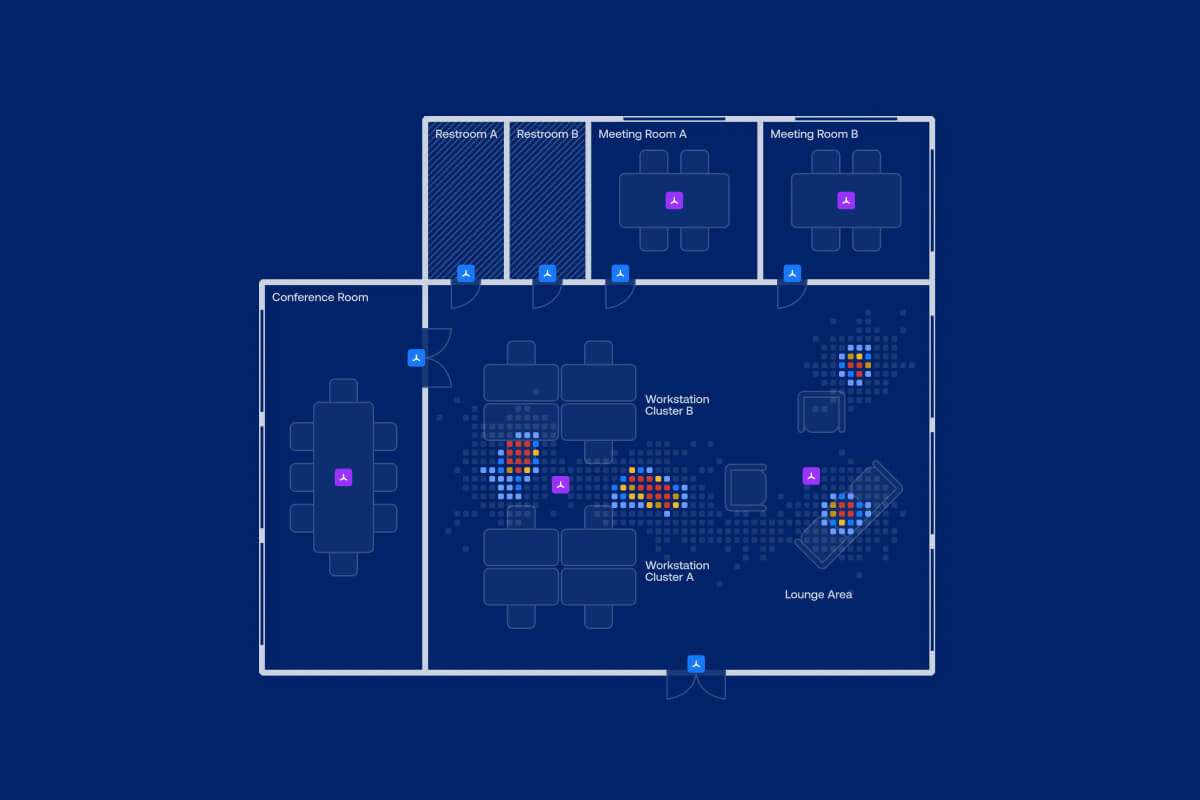The pandemic has forced workplaces to compete against the convenience of working from home. Fortunately, most employees say the office still plays a critical role in collaborating and relationship building.
But post-pandemic, employees will come to the office for a specific purpose. They’ve scheduled time for brainstorming or a team onsite. They want heads-down alone time so they reserved a phone booth.
Their time spent in the office will be carefully planned. Is serendipity a casualty of all this planning?
Serendipitous encounters are a powerful consequence of the office environment, particularly when employees interact with colleagues they normally don’t work with.
Creativity comes from spontaneous meetings, from random discussions. You run into someone, you ask what they’re doing, you say ‘Wow,’ and soon you’re cooking up all sorts of ideas.
Steve Jobs
Employers and designers know this, which is why for years they’ve looked for ways to encourage these types of interactions. The open floor plan came from this. As did the world’s tallest spiral staircase, housed in Atlanta’s Coda building — staircases are a great place to strike up impromptu conversations.
Workspace design will continue to play a role in fostering serendipitous encounters that spark new ideas and boost workplace camaraderie. But in the new office landscape, you have a bigger issue to address: How do you compel employees to come to the office, even when they don’t have to?
We’ve posed this question to dozens of workplace managers over the past year. Most conclude that there are two factors to lean into to create an environment employees want to be a part of — incredible experiences and employee choice.
Wow-factor experiences
When Izzy Sanchez (Twitch’s Head of Global Workplace and Real Estate) surveyed employees to find out what they missed most about the office, unique experiences like Twitch’s food program were among the most popular responses.
As offices reopen, many experiences like food programs might remain on hold, for safety reasons. But those holds are temporary. They will return. This interim period is an ideal time to go back to the drawing board to ideate on new experiences employees will remember, and want to come back to.
How do you create that wow moment that’s not just the design or aesthetic of the place, but how it makes you feel?
Peter Van Emburgh, Global Head of Corporate Real Estate, CBRE
Van Emburgh cites one of CBRE’s programs, Host, as an example of giving employees that wow experience.
For example, imagine an employee walking into the office and being handed a coffee exactly the way she takes it.
“People remember that experience of walking into a workplace,” Van Emburgh says, “and that’s just something we’re heavily focused on. That hospitality, that white-glove treatment.”
Surveys can help you pinpoint the experiences employees crave. So, too can understanding how your space is used.
For CBRE, that means mapping out the entire journey of employees, from the point of arrival in the office to the point of departure. They’re using Density in part to provide these insights.

Employee choice (and control)
57% of employees surveyed by JLL want to choose where they work while in the office, based on what they’re working on.
Humans equate choice with having control (despite that not necessarily being true). When you give employees a choice of where and how they work, they’re more inclined to enjoy their working environment.
Van Emburgh cites choice as a large reason why 93% of employees who work in CBRE’s 90+ flexible offices worldwide would not go back to the old model of assigned desks.
“We are very thoughtful making sure there are so many choices of where work gets done within four walls,” he says.
Giving employees choice means creating a variety of spaces inside the office. Conference rooms and unassigned workstations are standard. But employees will also want the ability to go somewhere like a phone booth or couch for heads-down alone work. Teams might also want to get creative with how they collaborate.
An effective way to accommodate a near-limitless array of working arrangements is with movable partitions and reconfigurable furniture.
Twilio calls these dynamic spaces — and they’re becoming a central part of the company’s return-to-work strategy.
This allows more variety to meet people where they are. You can build and rebuild as needed.
Devorah Rosner, Sr. Manager of Global Workplace Operations at Twilio
Valve, the gaming company, has been doing this for years. Valve’s flat organizational structure means employees create their own assignments, and lobby other employees for help in making it happen. To support this structure, every desk has wheels, and employees are encouraged to move them where and when they want.
Valve’s approach might be extreme, but most companies can integrate a more approachable flex design.
However, giving employees choice may not be enough to nurture serendipitous encounters. Teammates will likely flock to their familiar cohorts for a sense of place and belonging.
One way you can tear down these siloed cohorts is by experimenting with first-come-first-serve unassigned seating. This minimizes the chances of teammates reserving seats together. Employees can also reserve a meeting room if they need structured collaborative time.
When serendipity has to take place online
Not every employee will want to come to the office. Adjusting to the new workplace means finding ways to nurture collaborative opportunities for every employee.
Some companies are testing virtual open-door policies on Zoom. For example, employees schedule one hour twice a day where they sign into their personal meeting room. Colleagues can join their Zoom for impromptu chats.
It’s not a perfect replacement for stopping by a desk. But it’s something.
Other companies (including us at Density) use the Slack app Donut to schedule meetings with random colleagues. While it’s not quite serendipitous, it does make it easier for employees to connect with colleagues outside their usual cohort.
